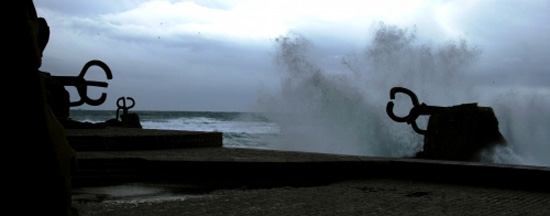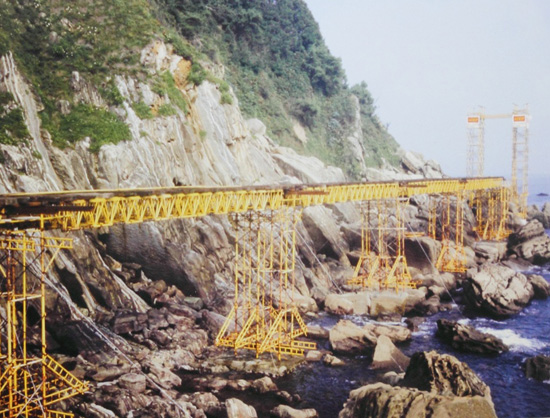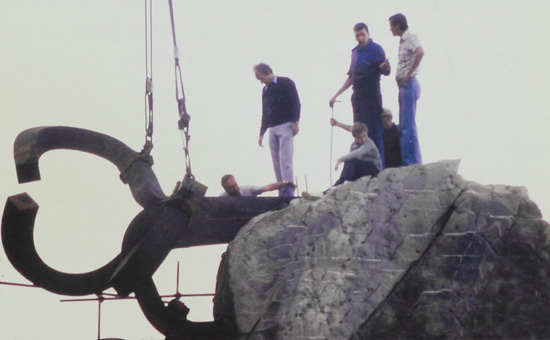
A luglio parlavo qui del rapporto tra il Meeting di Rimini e l’arte contemporanea. Poi a Rimini ci sono andato e ho scoperto che un artista contemporaneo si era intrufolato, niente meno, che nella conferenza più importante della kermesse: quella sul tema di quest’anno, “La natura dell’uomo è rapporto con l’infinito”. All’inizio della sua lezione don Javier Prades ha detto:
A proposito del senso delle sue sculture, Chillida sostiene che “tutte le opere d’arte in realtà sono interrogativi, domande”, e che le sue opere vogliono porci di fronte a un orizzonte infinito, di fronte a un punto di fuga misterioso insito in tutta la realtà: “Vorrei mettere l’uomo davanti a uno spettacolo così impressionante come è l’orizzonte, irraggiungibile, necessario. Perchè, se ci pensi bene, l’orizzonte è irraggiungibile, nessuno lo può negare. (…) Se tu avanzi, lui si sposta. Sono arrivato a pensare che forse l’orizzonte è la patria comune di tutti gli uomini…”. Nella contemplazione paziente dei suoi capolavori di fronte al mare – a San Sebastián e a Gijón -, si sente il “racconto” di una apertura, di una domanda di infinito tipicamente umana, che si converte in un abbraccio. La solidità del cemento armato e dell’acciaio si piega al movimento della “scrittura” di Chillida, e la materia più resistente si mette al servizio dell’anelito più alto dello spirito umano, una espressione dove tutti si incontrano.
Mi colpisce quanta energia ci sia nell’opera di San Sebastián. “Il pettine del vento” è stato progettato nel 1968, ma ci vollero nove anni perché fosse realizzato. È impressionante vedere le immagini dei lavori per l’istallazione di queste sculture d’acciaio pesanti 10 tonnellate. Uno sforzo tecnico enorme, degno di un’opera davvero potente. Impossibile da comprendere, forse, senza sentire dal vivo la forza del vento e la risacca del mare.

During the main conference of the Rimini Meeting this year, dedicated to the title “By nature, man is relation with the infine”, father Javier Prades spoke about, in a very interesting way, a contemporary sculptor:
About the meaning of his sculptures Chillida claims that “all the works of art are actually questions”, and that his works want to confront us in an infinite horizon, in front of a mysterious vanishing point inherent in the whole of reality: “I would like to put the man in front of a show as impressive as is the horizon, unreachable, necessary. Because if you think about it, the horizon is unreachable, no one can deny. (…) If you leftovers, he moves. I came to think that perhaps the horizon is the common homeland of all mankind…”. In patient contemplation of his masterpieces in front of the sea – San Sebastián and Gijón – you will hear the “story” of an opening on a question of infinite uniquely human, which is converted into a hug. The strength of reinforced concrete and steel bends to the movement of the “writing” of Chillida, and the material more resistant is putting the highest aspiration of the human spirit, an expression where all meet.
I am struck by how much energy there is in the work of San Sebastián. “The Comb of the Wind” was designed in 1968, but it took nine years to be realized. It is impressive to see the images of the works for the installation of these sculptures of steel that weigh 10 tons. Enormous technical effort, worthy of a work really powerful. Impossible to understand, perhaps, without feeling, live, the wind and the surf of the sea.



